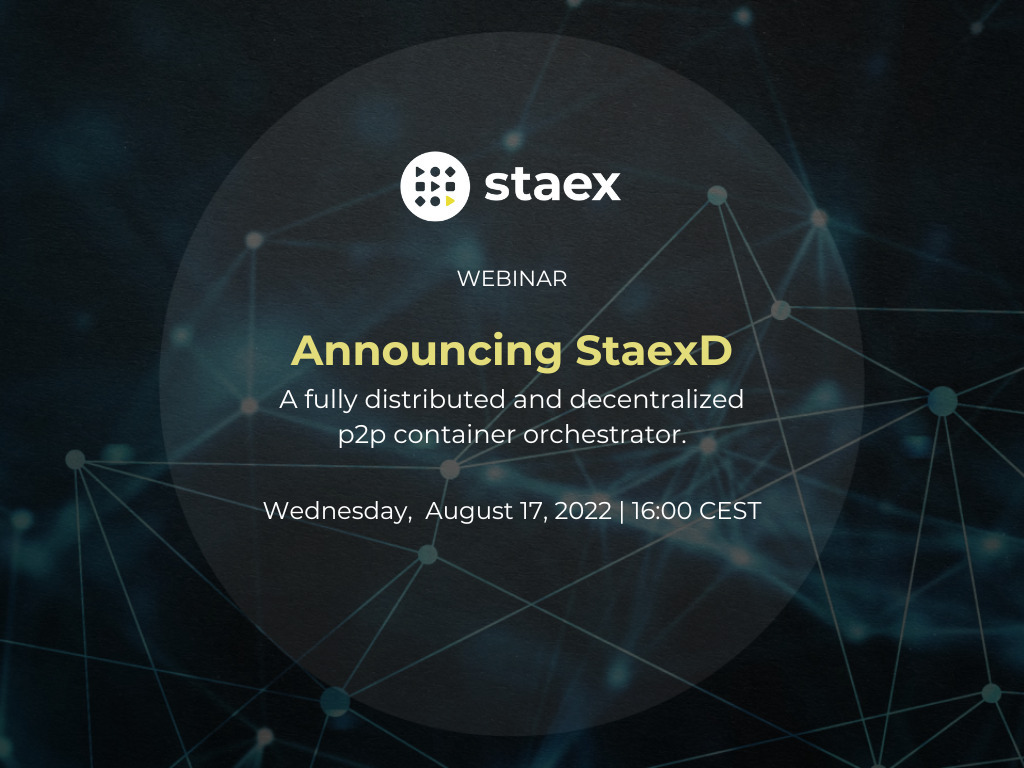Announcing StaexD: A fully distributed and decentralized P2P container orchestrator
2022-08-17
Edge devices working autonomously need to be able to scale containers without stable connections to the cloud. StaexD promises a completely novel way of managing software from cloud to edge with high speed and full decentralization.

Wednesday, August 17, 2022 | 16:00 CEST
Large scale deployments of IoT or distributed devices require orchestration support that can function with changing connectivity status and through peer-to-peer means. Edge devices working autonomously need to be able to scale containers without stable connections to the cloud. Traditional orchestration tools like Kubernetes rely on a centralized master-worker setup. This works for localized cases with one DevOps team running the infrastructure, but this star-shaped model of control does not scale when working with many different types of hardware (physical or virtualized) which are not colocated behind the same network firewalls and NATs. Additionally, Kubernetes does not allow for shared infrastructure control between different members in a consortium. Andrew Heimerman from Staex will present a new piece of software from Staex, StaexD, which is a fully decentralized orchestration daemon which is compatible with the Staex p2p network, MCC. StaexD promises a completely novel way of managing software from cloud to edge with high speed and full decentralization.
Watch the recording below!


Staex is a secure public network for IoT devices that can not run a VPN such as smart meters, IP cameras, and EV chargers. Staex encrypts legacy protocols, reduces mobile data usage, and simplifies building networks with complex topologies through its unique multi-hop architecture. Staex is fully zero-trust meaning that no traffic is allowed unless specified by the device owner which makes it more secure than even some private networks. With this, Staex creates an additional separation layer to provide more security for IoT devices on the Internet, also protecting other Internet services from DDoS attacks that are usually executed on millions of IoT machines.
To stay up to date subscribe to our newsletter, follow us on LinkedIn and Twitter for updates and subscribe to our YouTube channel.

See also
Staex and MIBO Announce Strategic Partnership to Bring Trusted IoT Connectivity to Public Transport
2025-03-17
Staex, an award-winning innovator in zero-trust IoT connectivity and network management, is partnering with MIBO, a German bus fleet company operating 150 buses in Nordrhein-Westfalen, to revolutionize public transportation data management.
Staex: Data Sharing for IoT
2024-06-17
In this article, we want to share how we achieved Web3 IoT data infrastructure utilizing Staex and PEAQ networks.
Geeny by Telefónica and Staex to build secure public network for remote machines and devices
2024-05-06
Geeny by Telefónica and Staex will provide building blocks for secure IoT connectivity in the field.


